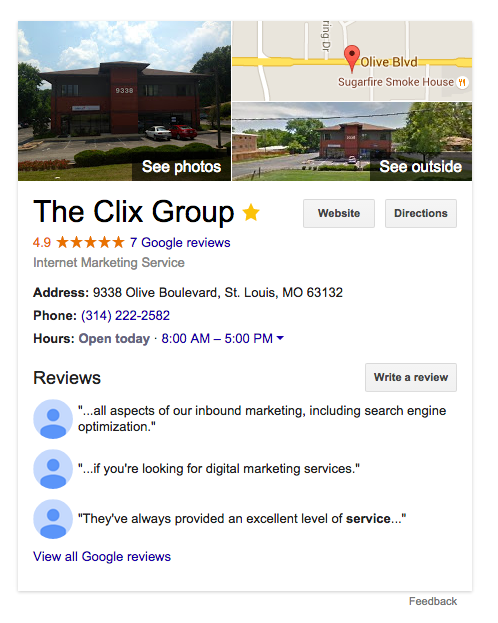Any business that gets some or all of its customers or clients locally should consider local SEO. That includes local restaurants, doctors, dentists/orthodontists and lawyers, but it could just as easily be a local ad agency or other more specialized service businesses. Basically, if you have an actual address in a city and expect customers to go there, you should be doing local SEO. And Google Places is a great place to start.
Follow the Google Places Guidelines
One of the most important things to take away from this blog post is to make sure you’re presenting the business exactly as it appears offline in the online world. When creating an online presence it’s easy to get carried away with adding loads of fluff. The basic information that Google wants to see is the foundation for creating a good local listing. Be sure to use accurate location information as this help get your business listing in the map.
Complete the Entire Listing Profile
Give users/searchers as much information about your business as you can without overdoing it. You want to give customers an informative experience, not overwhelm them. Fill out as many fields as you can, even those that are not required. This will be helpful when you have similar listing options to pick from—the customer is more inclined to choose the business with more information provided.
With this in mind, be certain to list your website URL. If your business has more than one location, make sure to list the URL that best fits the location.
For example, a foot and ankle center might only have one website but it has 10 different locations. Be sure to create a separate page on the website for each location and link those pages to the appropriate listing. This is also a great way to give the customer specific location information such as the businesses address, telephone number, and directions.
Like the guidelines say, “do not provide the phone number or URLs that redirect or ‘refer’ users to landing pages or phone numbers other than those of the actual business.”
Don’t forget about a well-written description of your business, being sure to avoid keyword stuffing. Google will notice if you are trying to manipulate search results by adding irrelevant keywords. The description should convey the core value of the business.
Include Rich Content
It’s a known fact that when someone is viewing a webpage their eyes go from the top left to the top right, then down to the bottom left to the bottom right, making a Z. With that said, Google now has what’s called a Knowledge Graph. Knowledge Graphs are displayed in Google search results to “enhance its search engine’s results with semantic-search information” gathered from a variety of online sources. The Knowledge Graphs are found on the right side of the screen after performing a search.
Adding rich content, photos, videos, and even special offers and coupons codes to the business listing makes it easier for your business to communicate with their customers. The higher the quality of the images and videos, the better.
Rich listings feature a description, several photos and more. Having a rich listing will “help encourage potential customers to choose your services” over the others listed in the search results.
Picking Categories Wisely
Like other local listing directories, Google Places uses categories to help filter the search results to find the business they want to show. Make sure you only select categories that truly pertain to your business. It’s likely that Google uses those categories as a guide for the listings, telling them when and when not to display in search results based on the terms selected. Try to be as specific as possible.
Reviews, Reviews, Reviews
This cannot be stressed enough: encourage your customers to leave you Google reviews. The more reviews you have on your Google Places listing the better. Let your customers or clients know they can rate their experience with you on your Google Places profile. Consider handing them a card with the URL to your Google Places listing or have signs in your office showing the places where people can leave reviews. Include links in your email signature that communicates it simply (particularly in follow-up emails after a purchase or visit) and anywhere else you can think of to get it in front of customers. And remember, if you want positive reviews, make sure you are providing a service that warrants them.
Getting review from customers can also help your SEO; potentially making your business more visible on local search results like the map.
When it comes to Local SEO, it is absolutely an ongoing process. You should always work to get new citations, reviews, and social mentions each and every month to keep the ball rolling.



